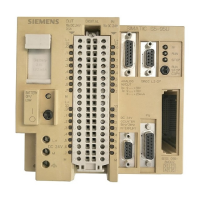Tool operations
3.15 Execution order of operations
SIMATIC Automation Tool V2.1 user guide
Manual, V2.1.1 07/2016, A5E33042676-AC
53
Execution order of operations
Operations are initiated with a toolbar button or menu item. For each toolbar button press, a
single operation is added to the operations queue, for each selected device row. For
example, if 20 different CPUs are selected and the RUN button is pressed, then 20 RUN
operations are added to the queue.
For better performance, separate threads can run independently to initiate and execute the
operations contained in the queue. The number of concurrent threads allowed is assigned in
the Options dialog. Separate threads are not allowed to simultaneously start jobs on one
CPU, to avoid race conditions where one job is putting the CPU in STOP and another job is
placing the same CPU in RUN.
Execution examples
Example 1:
If the operations queue contains 10 go to RUN jobs for different CPUs, then multiple threads
work in parallel to put all the CPUs in RUN mode. Since the threads execute in parallel, there
is no guarantee of the order that CPUs complete the transition to RUN mode.
Communication speeds can be different and how fast the job completes can be different, for
each CPU.
You can queue as many jobs of the same type as you want. For example, you can place 100
CPUs in STOP mode by selecting all 100 CPUs and clicking the STOP button. However, a
dialog box with a progress bar is displayed until all 100 jobs are complete. This dialog box
will block the start of another operation, until all the STOP operations are complete.

